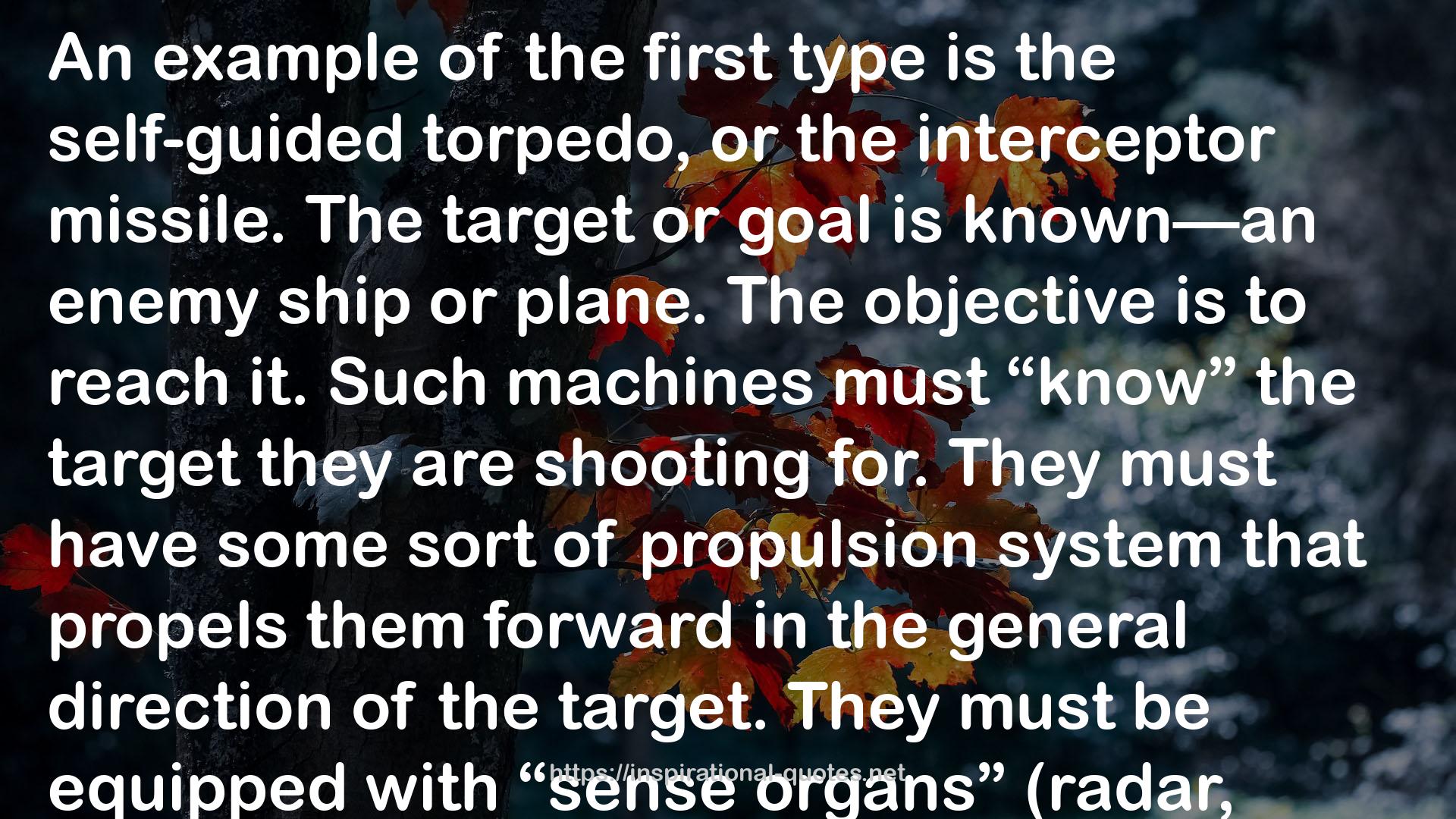" An example of the first type is the self-guided torpedo, or the interceptor missile. The target or goal is known—an enemy ship or plane. The objective is to reach it. Such machines must “know” the target they are shooting for. They must have some sort of propulsion system that propels them forward in the general direction of the target. They must be equipped with “sense organs” (radar, sonar, heat perceptors, etc.), which bring information from the target. These “sense organs” keep the machine informed when it is on the correct course (positive feedback) and when it commits an error and gets off course (negative feedback). The machine does not react or respond to positive feedback. It is doing the correct thing already and “just keeps on doing what it is doing.” There must be a corrective device, however, that will respond to negative feedback. When negative feedback informs the mechanism that it is “off the beam,” too far to the right, the corrective mechanism automatically causes the rudder to move so that it will steer the machine back to the left. If it “overcorrects” and heads too far to the left, this mistake is made known through negative feedback, and the corrective device moves the rudder so it will steer the machine back to the right. The torpedo accomplishes its goal by going forward, making errors, and continually correcting them. By a series of zigzags it literally gropes its way to the goal. Dr. Norbert Wiener, who pioneered the development of goal-seeking mechanisms in World War II, believes that something very similar to the foregoing happens in the human nervous system whenever you perform any purposeful activity—even in such a simple goal-seeking situation as picking up a pen from a desk. "
― Maxwell Maltz , Psycho-Cybernetics, A New Way to Get More Living Out of Life
